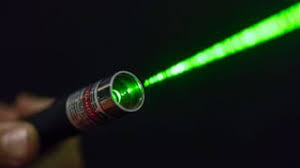The Power and Precision of Lasers
Lasers have revolutionized numerous industries with their unparalleled precision and versatility. From cutting-edge medical procedures to high-speed communication networks, lasers have become an indispensable tool in our modern world.
One of the key advantages of lasers is their ability to deliver focused beams of light with incredible accuracy. This precision allows for intricate surgical procedures that minimize damage to surrounding tissues, making laser surgery a preferred choice for many patients.
In manufacturing, lasers are used for cutting, welding, and engraving a wide range of materials with unmatched speed and efficiency. The controlled heat generated by lasers enables precise shaping and customization, leading to higher quality products in industries such as automotive, aerospace, and electronics.
Furthermore, lasers play a crucial role in scientific research and exploration. They are used in spectroscopy to analyze the composition of materials, in astronomy to measure distances between celestial bodies, and in environmental monitoring to study air quality and pollution levels.
On the entertainment front, lasers create dazzling light shows that captivate audiences around the world. Whether it’s a concert, a laser light display at a theme park, or a laser projection mapping on buildings, these visual spectacles showcase the artistic potential of laser technology.
As technology continues to advance, so does the potential for lasers to reshape our world in ways we have yet to imagine. With ongoing research and development pushing the boundaries of what lasers can achieve, we can expect even more groundbreaking applications in the years to come.
In conclusion, the power and precision of lasers have transformed industries ranging from healthcare to manufacturing to entertainment. As we harness the full potential of this remarkable technology, we open up new possibilities for innovation and progress across various fields.
Shining a Light on Laser Technology: Understanding Function, Types, Applications, Safety, and Medical Uses
- How do lasers work?
- What are the different types of lasers?
- What are the common applications of lasers?
- Are lasers dangerous to use?
- How are lasers used in medical treatments?
How do lasers work?
Lasers operate on the principle of stimulated emission of radiation. Essentially, a laser device produces a concentrated beam of light through a process that involves exciting atoms or molecules to higher energy levels. This stimulation triggers the emission of photons, which are then amplified and aligned to create a coherent and intense beam of light. The resulting laser beam is characterized by its monochromaticity, directionality, and high intensity, making it an invaluable tool in various applications such as cutting, welding, communication, and medical procedures.
What are the different types of lasers?
There are several different types of lasers, each designed for specific applications based on their unique characteristics. Some common types include gas lasers, solid-state lasers, semiconductor lasers, fiber lasers, and dye lasers. Gas lasers, such as helium-neon and carbon dioxide lasers, use a gas mixture as the lasing medium. Solid-state lasers, like Nd:YAG and ruby lasers, rely on solid materials to generate laser beams. Semiconductor lasers, commonly found in laser diodes, are compact and efficient due to their semiconductor chip construction. Fiber lasers utilize optical fibers as the gain medium for amplified light emission. Dye lasers employ organic dyes dissolved in solvents to produce a wide range of wavelengths. Each type of laser has its strengths and limitations, making them suitable for various applications across industries such as healthcare, telecommunications, manufacturing, and research.
What are the common applications of lasers?
Lasers find a multitude of applications across various industries due to their precision and versatility. Common uses of lasers include laser cutting and engraving in manufacturing, laser surgery in healthcare, laser scanning in 3D imaging, laser communication in telecommunications, laser marking for product identification, and laser spectroscopy for scientific research. Additionally, lasers are employed in entertainment for light shows and projections. The diverse range of applications showcases the indispensable role that lasers play in advancing technology and innovation across different sectors.
Are lasers dangerous to use?
Lasers can be dangerous if not used properly. The concentrated beams of light emitted by lasers have the potential to cause harm to the eyes and skin if direct exposure occurs. It is important to follow safety guidelines, wear appropriate protective gear, and receive proper training when operating lasers to minimize the risk of injury. By understanding and adhering to safety protocols, users can harness the benefits of lasers while ensuring a safe working environment for themselves and others.
How are lasers used in medical treatments?
Lasers are utilized in a wide array of medical treatments due to their precision and versatility. In medical procedures, lasers can be used for various purposes such as cutting, cauterizing, and vaporizing tissues with minimal damage to surrounding areas. Laser technology is commonly employed in dermatology for skin resurfacing, hair removal, and tattoo removal. Additionally, in ophthalmology, lasers are instrumental in correcting vision problems like nearsightedness and astigmatism through procedures such as LASIK surgery. Furthermore, lasers play a crucial role in minimally invasive surgeries, such as endoscopic procedures and tumor removals, offering patients faster recovery times and reduced risk of complications. The use of lasers in medical treatments continues to evolve, with ongoing research expanding their applications and improving patient outcomes.

No Responses